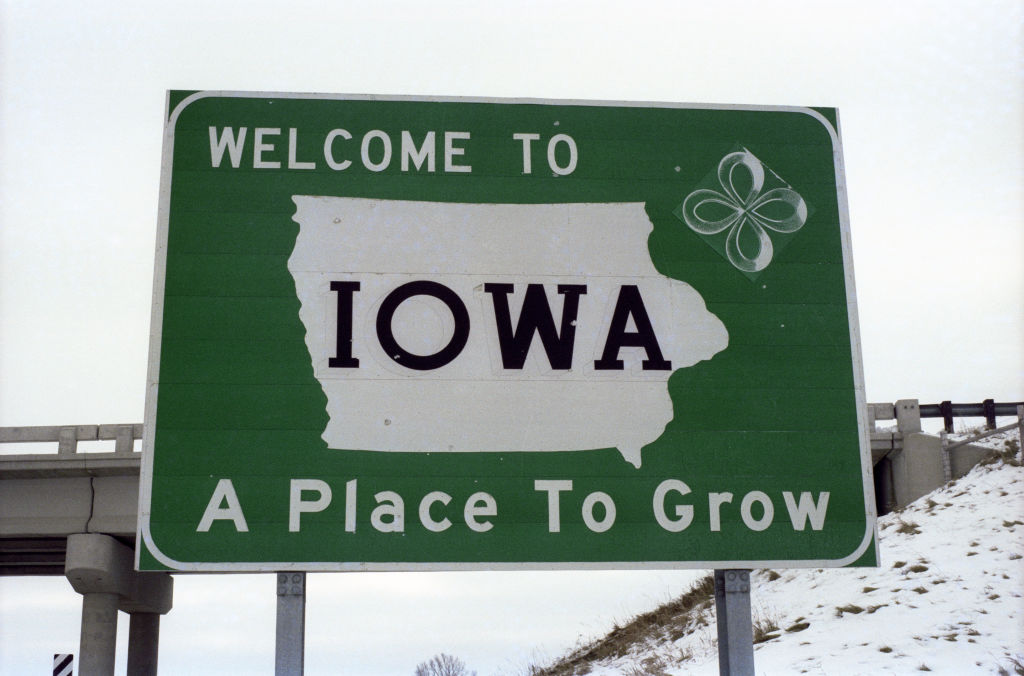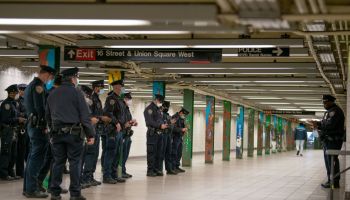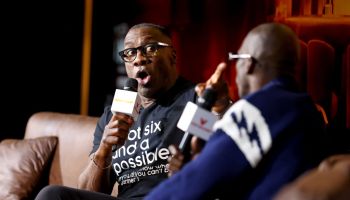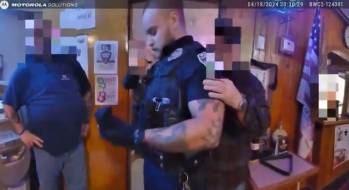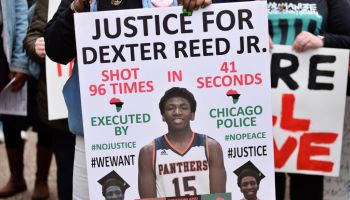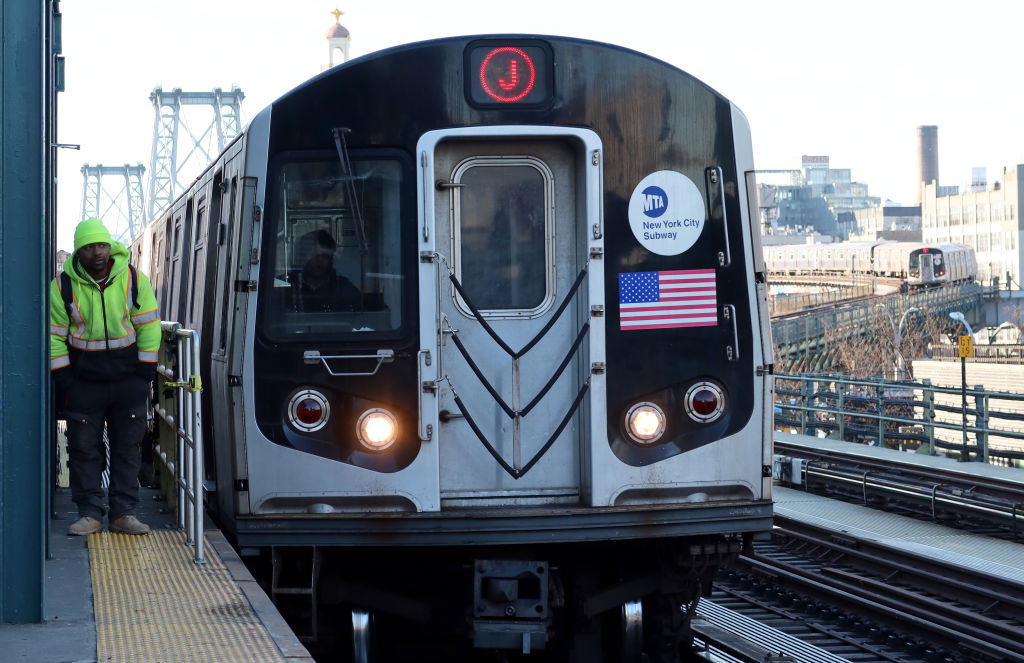
Source: Gary Hershorn / Getty
The expeditious arrest of a Black man claiming self-defense in a subway killing this week in New York City stands in stark contrast to the way the police responded to Daniel Penny choking Jordan Neely to death on the subway last month despite the two instances sharing a number of similarities.
Jordan Williams was arrested Tuesday night and charged with manslaughter in the stabbing death of Devictor Ouedraogo, who was reportedly “acting belligerent and violent” on the J train when the two men encountered each other, according to local news outlet PIX 11.
Williams’ lawyer claims the 20-year-old Black man from Queens was compelled to defend himself “and others,” including his girlfriend when Ouedraogo reportedly confronted passengers on the train in Brooklyn. Ouedraogo, 36, allegedly assaulted Williams’ girlfriend.
The New York Post reported that a witness claimed Ouedraogo threatened “to erase someone.”
Notably, Williams does not have a criminal record and Ouedraogo “had been experiencing homelessness and was an ex-con,” PIX reported citing state records.
While criminal histories and housing status should in theory be irrelevant, those factors were certainly taken into account with Penny’s chokehold death of Neely under very similar circumstances aboard an F train on May 2.
All the details have still not been reported in Ouedraogo’s death, but at face value, that incident shares stirring similarities with the chokehold homicide of Neely, whose criminal record surfaced amid reports about him being homeless and on drugs. But there are also key differences.
Williams was “defending himself and others” on the train, his lawyer, Jason Goldman, said while claiming the circumstances made it “very clear some action was necessary and justified at that time” of the stabbing.
Goldman then introduced the unavoidable race factor while comparing Williams’ arrest to the treatment afforded to Penny by multiple New York City law enforcement agencies.
“He shouldn’t be a lost number going to Rikers Island like other people that look like him, young Black kids,” Goldman said about Williams instantly being remanded to the notorious jail. “As opposed to Mr. Penny, who looks different.”
Goldman expounded on that notion.
“It’s upsetting to see that Mr. Williams is even being charged without a thorough investigation,” Goldman said in a statement published in the New York Times. “We already know that the victim punched Mr. Williams’s girlfriend and menaced passengers.”
Goldman later asked: “Is Mr. Williams not getting the same treatment that Mr. Penny received — released, voluntary surrender, and low bail — because his skin color is different and he comes from a particular neighborhood?”
To recap, eyewitnesses claim Penny ambushed Neely from behind with a deadly chokehold he likely learned to employ as a member of the U.S. Marines. The chokehold lasted for as little as five minutes and as long as 15 minutes, depending on who you ask, and video footage showed Penny steadily tightening his grip as two other men helped him hold Neely down on the subway floor.
Neely, in the throes of a mental health crisis when he was choked to death, was, like Ouedraogo, accused of acting erratically and menacing passengers before he was killed.
Despite the video evidence and eyewitness accounts, the NYPD inexplicably gave Penny the benefit of the doubt and released him without any criminal charges in the admitted chokehold death of Neely.
It would be nearly two full weeks later before Penny and his lawyers were afforded the privilege of carefully orchestrating his surrender to the police on their own terms.
More than a month later, Penny was finally indicted on Wednesday and formally charged with second-degree manslaughter, a slightly lighter charge than what Williams was quickly charged with just hours after Ouedraogo died.
The clear differences applied to such similar situations lend further credence to civil rights lawyer Ben Crump’s persistent reminder that there are “two justice systems in America: one for Black people and another for whites.”
Now, let’s see if donors rush to praise Williams for killing Ouedraogo and flood an online crowdfunding effort with millions of dollars like what was done for Penny.
SEE ALSO:
Jordan Neely’s Killer Had Help: Will The People Who Aided And Abetted Daniel Penny Be Charged Too?
Online Donations For Jordan Neely Lag While Daniel Penny Receives Millions After Chokehold Homicide
